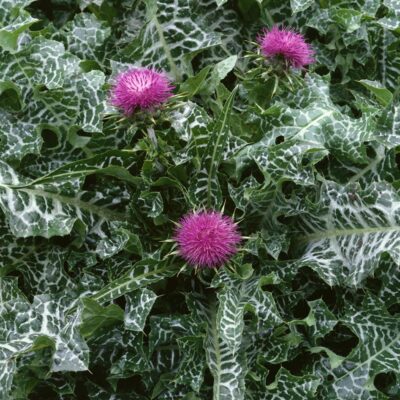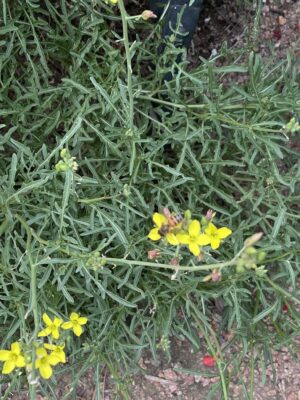In a corner of England, long, long ago, a young woman with visions of the epic garden she was planting, sowed seeds of milk thistle, Silybum marianum. HUGE mistake! Little did I know (yes, moi) that the enchanting, fresh young foliage, shimmering with silvered veins in the Norfolk sunshine, would age to old boot leathers tipped with needle-sharp spikes, and that the charming pink, powder-puff flowers would ripen to cast a gazillion seeds around the meadow, defeating all attempts made to pull them up and consign the invasion to oblivion. That was one gardening lesson I learned the hard way…be careful what you sow.

This episode came vividly to mind as I hand-pulled a ton of purslane from the ‘meadow’, a small area where I am trying to convert a water-glutton lawn into something better suited to the steppe-like conditions of the Front Range of the Rockies; I’ve also tried to keep on top of sundry other things that have seeded into the space from the native plants surrounding it. The plan is that it will all merge into one cohesive modestly controlled wildness, but no doubt there will be patches of purslane percolating through the overgrowth.

The past few weeks of sullen August heat have, fortunately, been cheered up by the return of late afternoon rain showers and random downpours, such that things I feared had given up the ghost revived; decorative annuals like petunias, heartsease and morning glories are having a second jubilant flowering even while setting seed. Most generously, arugula, both the commonly available broad-leaved sort and the wilder one, with lacy narrow leaves that’s a typical ingredient in Italy of insalata di campagna – country salad – are bursting with flowers, which in turn are covered with drunken bees, ecstatically pollinating the flowers to give me next year’s crop. Bees have been about this business for hundredss, indeed thousands, of years: in Ireland in 1840, one man visiting Dublin’s famed Botanic Garden found plants of Berberis aristata that he raised from seeds saved from a jar of barberry jam. This small, red, currant-like fruit is a key ingredient in middle-Eastern savory foods, and is also a popular herbal remedy besides being used for jams and fruit cordials in Europe and North America.
That seeds can survive being boiled to make jam is a wonder, that they can endure long periods in temperatures below freezing is less so; the Svalbard Global Seedbank, under the aegis of the Norwegian government and housed in the Arctic deep freeze, “safeguards duplicates of 1,301,397 seed samples from almost every country globally, with room for millions more. Its purpose is to back up gene bank collections to secure the foundation of our future food supply.” They note that where once the human diet comprised more than some 50,000 food plants, today just about 7500 of that number shapes the diet of 90% of the world’s burgeoning population. Clearly, preserving diversity to promote global health…and the health of the globe, is paramount.

Svalbard’s work is complemented by smaller efforts that are equally relevant to preserving the diversity of food plants; for instance, Seed Saver’s Exchange led the way promoting heirloom seeds for home gardeners, preserving the enormous variety of food plants that once shaped the harvest of many backyard gardens. But their catalogue also provides an archive of the family and regional traditions that enhance the importance of this plant conservation work.
Being the hard-boiled romantic that I am, the stories behind the seeds I’ve saved and grown are the weft of my garden’s rich tapestry. However, having learned the hard lessons of the needle-sharp thistle (which, btw, can reach to five feet in height and girth), I take care not to let my garden treasures wander into other’s patches uninvited. If only the same could be said of certain folks bordering my little bit of ground. I do wonder, vaguely, if the trend for native gardens is not thought by some to be a equivalent to a patch weeds, ergo, whatever pops up is good to go and will be welcome in other gardens… including mine. A weed, you know, is plant growing where it is not wanted. So… not a chance…hell will freeze over first, and there’ll probably be purslane seeds among the icicles.
For more on Svalbard’s mission visit https://www.croptrust.org/work-1/svalbard-global-seed-vault/
To support Seed Saver’s Exchange or to receive a catalogue (which makes GREAT reading) visit https://seedsavers.org










